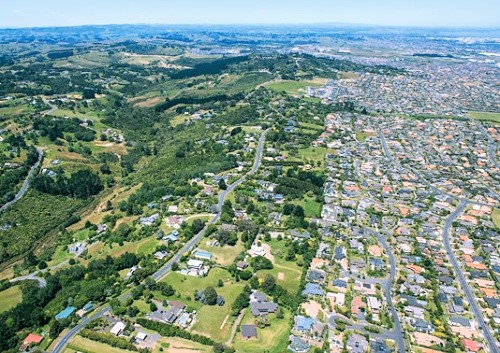When to use these guidelines When to use these guidelines
ITAs are usually required when lodging a planning application for a large scale development under the Resource Management Act.
 These guidelines provide information on how an ITA should be prepared in the Auckland region. The guidelines will ensure that the relevant transport effects of a development proposal are assessed, that appropriate mitigation is offered, and that information required by both Auckland Council (as the Regulatory Authority) and AT (as a RCA and infrastructure provider) is provided.
These guidelines provide information on how an ITA should be prepared in the Auckland region. The guidelines will ensure that the relevant transport effects of a development proposal are assessed, that appropriate mitigation is offered, and that information required by both Auckland Council (as the Regulatory Authority) and AT (as a RCA and infrastructure provider) is provided.
The requirement to prepare an ITA sits within the rules of the Proposed Auckland Unitary Plan (PAUP). As notified, Rule 2.7.9.1 (Chapter G) requires than an ITA be prepared where an application is:
- A plan change,
- A notice of requirement,
- A structure plan,
- A resource consent application for a land use or subdivision which is not specifically provided for as a controlled, restricted discretionary, or discretionary activity in the relevant zone (eg. non-complying),
- A framework plan,
and: where the application exceeds one of the following traffic thresholds:
Thresholds for an ITA
| Land use type | Threshold |
|---|---|
| Residential | 120 dwellings |
| Retail | 1,000m2 Gross Floor Area (GFA) |
| Office | 5,000m2 GFA |
| Industrial | 10,000m2 GFA |
| Warehousing | 10,000m2 GFA |
| Educational uses | 100 students |
| General trip generation | 100 vehicles in the peak hour |
The rule is a two-step process that requires an application to meet one or more of the requirements in each part of the rule. For example, if an applicant was proposing a plan change or non-complying resource consent but the application did not meet the traffic thresholds specified (eg. only 80 residential dwellings are proposed, or 5000m2 of industrial floor space, or the plan change is only about scheduling protected trees), then an ITA would not be required.
Rule 2.7.9.1.3 (Chapter G) states that when the thresholds are met, an ITA should be prepared in accordance with any ITA guidelines adopted by AT. An ITA prepared in accordance with these guidelines will meet the information requirements as set out in Rule 2.7.9.2 (Chapter G).
The Unitary Plan is subject to change through the hearings process, and if any of the rules or triggers relating to ITAs are changed as part of that process, this guideline will be updated accordingly.
Transport assessments
ITAs have been consciously targeted at large scale developments under the PAUP. The rationale for this approach is that it is more efficient for comprehensive and detailed assessment to occur at the early stages of the planning process when new areas are being planned for growth. This will allow a “worst case” transport assessment to be undertaken based on the proposed zonings and land use planned within a given area. Providing that any subsequent development is within the limits assumed under the structure plan or plan change, there will be no need to reassess its transport effects, particularly as it relates to trip generation.
However, there will still be a need to assess more detailed aspects of a development at the resource consent stage. This could relate to parking numbers or layout, access to and from a site, cycle parking, loading and other related matters. These assessments are referred to as “Transport Assessments” in the PAUP.
Chapter H, Rule 1.2.3.1 states that any activity that exceeds the following thresholds will be a restricted discretionary activity:
Thresholds for a transport assessment
| Activity | Type | Threshold |
|---|---|---|
| Residential | Dwellings | 30 dwellings |
| Retirement Village | 30 units/apartments | |
| Visitor Accommodation | 30 units | |
| Education | All | 100 students |
| Office | All | 1250m2 GFA |
| Retail | All | 500m2 GFA |
| Industrial | Warehousing/Storage | 5000m2 GFA |
| Other | 2500m2 GFA |
It is important to note that these thresholds apply only in outlying zones, and do not apply to the City Centre, Metropolitan, Town Centre or Terrace Housing and Apartment zones.
Transport professionals will likely be requested to provide advice where traffic generation exceeds the thresholds stipulated in the above rule; and in instances where other transport-related rules in the PAUP are not met, such as where a parking shortfall is proposed. However, these assessments will be much narrower in scope, being tailored to the particular breach of the PAUP rules in each case, and would NOT be expected to be prepared in accordance with these guidelines.